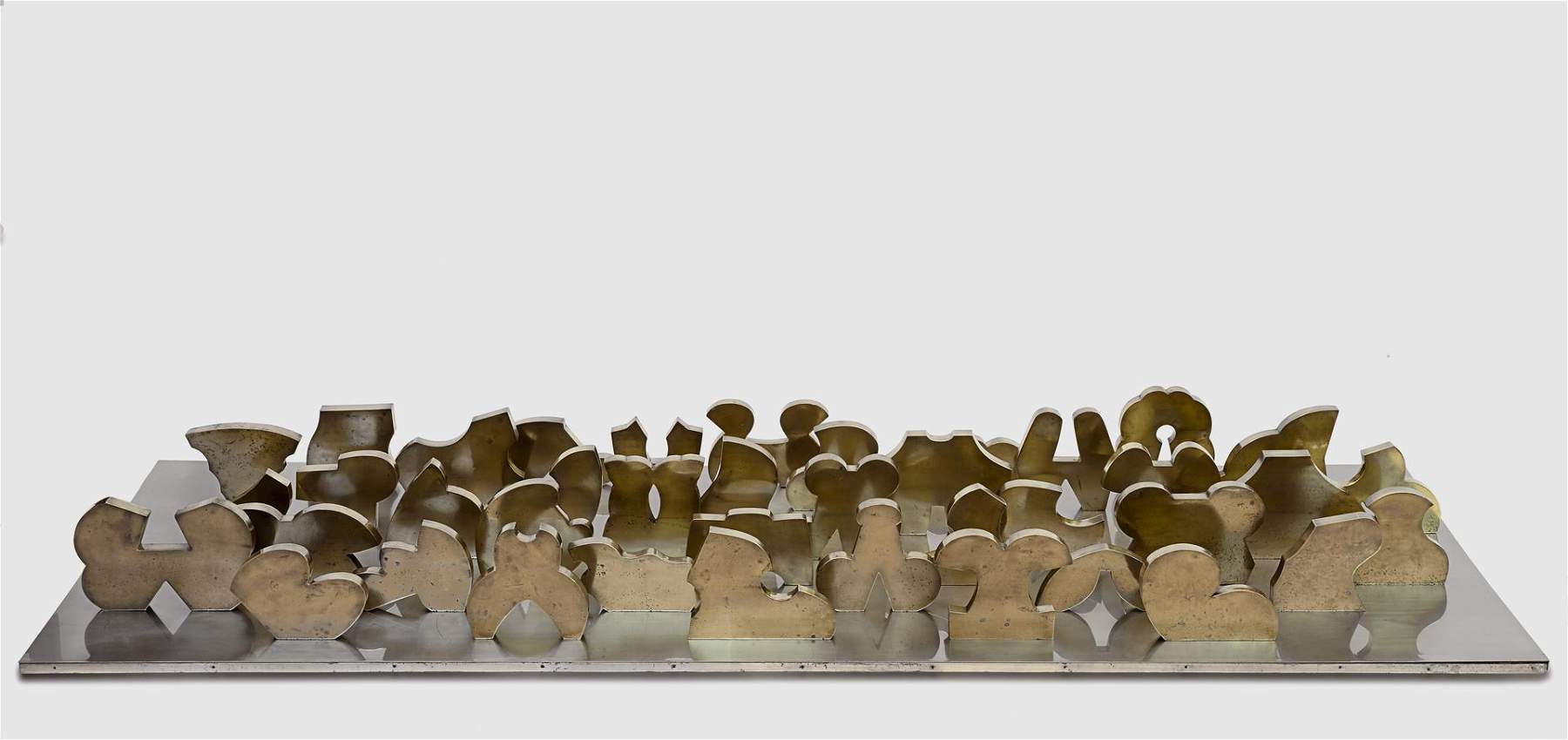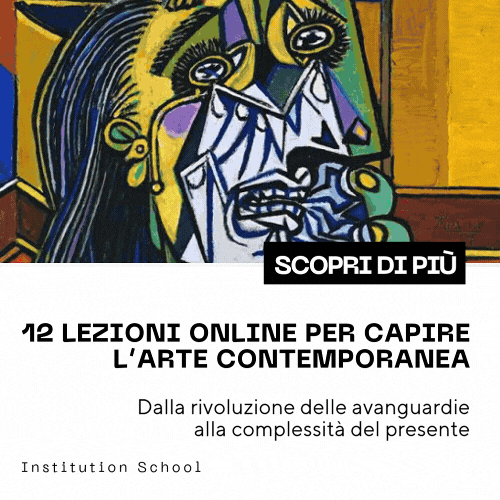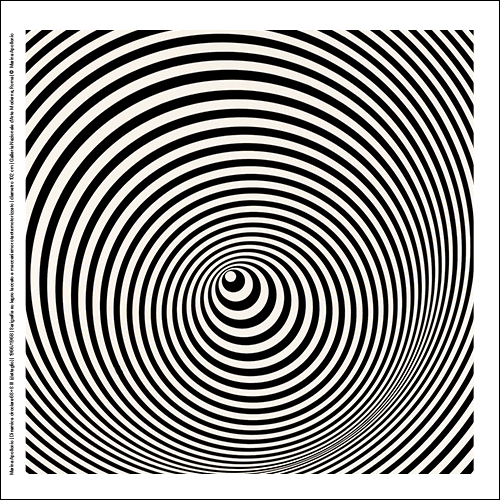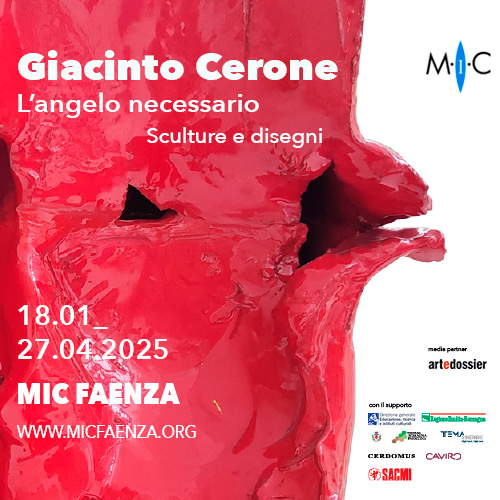In Lugano one of the largest exhibitions on Pietro Consagra, master of abstract sculpture
An exhibition entirely dedicated to Pietro Consagra (Mazara del Vallo, 1920 - Milan, 2005), one of the greatest abstract sculptors of the 20th century: this is the one that the Giancarlo and Danna Olgiati Collection in Lugano opens from September 12, 2021 to January 9, 2022, continuing the work of research and presentation of their collection. The retrospective, curated by Alberto Salvadori in collaboration with the Consagra Archive, was born as a natural continuity of the two collectors’ long acquaintance, strong friendship, shared intentions and love for art with the Sicilian artist and the desire to celebrate the centenary of his birth, which fell in 2020.
Entitled Pietro Consagra. The subject matter could not be, this is the first exhibition dedicated to the artist in a Swiss public institution. The dialectical relationship with the other, which has been at the center of his research (since the Colloqui series, from 1952), the frontality of vision and its changing interpretations, and the theme of the city as a place of thought and relationship to experience, constitute the core of the exhibition project and Consagra’s work presented at the Olgiati Collection.
The exhibition, traversing the artist’s work from the 1950s to the early 1970s, highlights how his contribution was not in fact formal but directed toward a participation, even a critical one, in the society in which he lived and worked. The sixty-four works in the exhibition testify to how, in a germinal manner first and consolidated later, Consagra always kept at the center of his research a strong focus on the value of man and art, in order to build a better society. Consagra is one of the rare artists of the twentieth century to have touched all aspects of artistic creation: he painted, sculpted, designed, created jewelry, furniture and urban architecture; he experimented with different techniques on numerous materials; he wrote a great deal, with refined polemical vis. The conceptual synthesis of such a path can be seen in the title of one of his works, in reinforced concrete, created in Sicily at the mouth of a dry fiumara, The matter might not have been there, as if to reiterate how important was the path that from the idea passes through the concept and ends in the dialogical relationship with the community. All matter was good for him; he did not distinguish in his being an artist and making art for one of them, he did not prefer the relationship with matter for purposes related to the search for form.
The theme of frontality, persistent in his work, excluded from sculpture traditional problems and themes of sculpture such as volume and mass, precipitated by the object. The exhibition features some of the most important Colloquia and a selection of key works from the 1950s in iron, bronze, steel and burnt wood, as well as numerous transparent irons. The Colloquia open the never closed season of the great conceptual theme in which free and fantastic form created presence, the key word for entering Consagra’s world. No process of mimesis, no persistence of the real, but an echo that goes creating forms in his sculptures directing us to that humanity presented in the simplest and most complex of its relationships. The Colloquia inhabit the space, their existential condition and not the frame. They are an ecological form, a presence in an environment. The interior research done on burnt wood, iron and bronze has always been accompanied by superb technique. It is a technique, joined by skillful use, of a medium that is potentially aggressive and instead, when used as Consagra did, as strongly expressive and poetic as the blowtorch.
The transparent irons, then, are presented as a two-sided image, no longer respecting the quadrangular layout and dominated by a curved line that continually breaks and rejoins. The irons are moved by a pressing, at times frenetic, inner rhythm and by light movements made graceful by color, by imaginative and non-naturalistic tones. The relationship between sign and drawing is maintained strongly, evidenced in the exhibition by the presence of several examples, including precious dustings from the artist’s archive. The transparent irons constitute an original, germinating space, where to the forms of nature and their contemplation art reacts with its own artificiality.
 |
| Pietro Consagra, New York City (1962; bronze and steel, cut, cast and welded plates, 171 x 105 x 29 cm). Photo: Paolo Vandrasch |
 |
| Pietro Consagra, Homage to Paisiello (1955; bronze, ground casting of individual parts and welding, 69 x 72 x 6 cm; Lugano, Private Collection). Photo: Maniscalco |
 |
| Pietro Consagra, Transparent Iron Turquoise II (1966; painted iron, cut, curved, welded and painted plates, 60.7 x 44.7 x 9 cm; Lugano, Private Collection). Photo: Claudio Abate. |
 |
| Pietro Consagra, Purple Garden (1966; painted iron, 130.5 x 143.5 x 0.5 cm; Lugano, Museo d’arte della Svizzera italiana, Deposit of the ProMuseo Association). Photo: Alexandre Zveiger. |
 |
| Pietro Consagra, Frontal City. 40 Embryonic Buildings (1968; brass and steel, cut, soldered and polished plates, 21 x 225 x 100 cm; Milan, Archivio Pietro Consagra). Photo: Paolo Vandrasch. |
“Art is the alternative not the refuge of nature,” Consagra said. “Art is no longer a service of Power, it is a way of life, a goal an example, a help. Nature can only absorb us, isolate us, take us out of the loop, keep us in failure, in the frustration of human relationships. The more nature can appear a likely asylum, the more the city runs toward human ruin. If we take refuge in nature we bring with us the destructive weapons of the present city and disseminate the corruption of our sense of the good. We must not go toward nature while we must go toward the city.” There was present since the 1960s in Consagra an awareness of how nature could not be an alibi, an ideal refuge, a place to be mythologized or defined as desirable, following today’s narrative about the value of small towns and the so-called countryside in its meaning as a place of refuge or mythical innocence.
Crucially, we start again from the city as man’s most experienced and extended place, then as now increasingly so. Here comes The Frontal City of 1969. On the occasion of the exhibition in Lugano, it will be presented in its entirety, with the fundamental horizon line, placed by the artist in the exhibition at the Aries Gallery in 1969, determining man’s location in relation to the landscape created by the artist\architect\urbanist. A sign, a gesture with humanistic traits, for an urban definition of the context. A concretization of emotions and ideas that find in the city form the most significant reference to the complexity of the entanglements that add up individual and collective ways of living, to the physical projection of political and economic powers. After his American experience and his encounter with the great architecture of Sullivan, Wright and other champions of modernism, Consagra with this theme does not declare an eccentric and authoritarian artist’s proposal, but addresses a real problem that has grown over time until it has become permanent: the many, mostly frustrating and conflicting, relationships of man with urban space, in addition to those debated all along, related to the necessary and immediate social impact. Consagra also brings into this sphere a fundamental theme related to the way of existing in the city: the progressive detachment of our identity from the new constructions that transform and dictate the space of city living, leading people to a state of general resignation. The frontal city is a sign of intellectual consideration but also of affective attachment to urban space. In his 1969 book The Frontal City, Consagra wrote that “cities have become resentful, but not of pollution, which is a remediable evil, but of the invasion of an architecture that will remain implanted, indestructible... ”.
Also on display for the first time in the exhibition will be three painted sheets, part of a larger nucleus produced by the artist between the late 1960s and 1970s. An example of intimate, personal work on poor, everyday material, they convey an echo of what young artists were doing at the time. Gesture of domestic politics where the representation of his idea of sculpture is never missing. The exhibition catalog contains previously unpublished essays by scholars and major archaeologists such as Mario Botta who have analyzed different themes related to the artist’s production. Lara Conte addresses in her text fundamental elements of Consagra’s work such as color and frontality in a dialogic and historical relationship with other artists of his generation and later; Andrea Cortellessa focuses Consagra as a writer, author of numerous essays, books and a highly successful autobiography Vita mia; Paola Nicolin makes public a study on painted sheets and the importance of these works in the artist’s production also with respect to the historical context in which they were made. Mario Botta gives his presence to the book with a recollection of his long-standing acquaintance and understanding with the artist, and finally Alberto Salvadori worked on the theme of the Frontal City and its topicality. The book is published by Mousse Publishing, edited by Alberto Salvadori. For all information you can visit the website of the Giancarlo and Danna Olgiati Collection.
In Lugano, one of the largest exhibitions on Pietro Consagra, master of abstract sculpture From Sept. 12, 2021 to Jan. 9, 2022, the Olgiati Collection in Lugano, Switzerland, is hosting one of the largest exhibitions ever on Pietro Consagra, the great master of 20th-century abstract sculpture. Entitled “Matter Might Not Have Been.”
An exhibition entirely dedicated to Pietro Consagra (Mazara del Vallo, 1920 - Milan, 2005), one of the greatest abstract sculptors of the 20th century: this is the one that the Giancarlo and Danna Olgiati Collection in Lugano opens from Sept. 12, 2021 to Jan. 9, 2022, continuing the work of research and presentation of their collection. The retrospective, curated by Alberto Salvadori in collaboration with the Consagra Archive, was born as a natural continuity of the two collectors’ long acquaintance, strong friendship, shared intentions and love for art with the Sicilian artist and the desire to celebrate the centenary of his birth, which fell in 2020.
Entitled Pietro Consagra. The subject matter could not be, this is the first exhibition dedicated to the artist in a Swiss public institution. The dialectical relationship with the other, which has been at the center of his research (since the Colloqui series, from 1952), the frontality of vision and its changing interpretations, and the theme of the city as a place of thought and relationship to experience, constitute the core of the exhibition project and Consagra’s work presented at the Olgiati Collection.
The exhibition, traversing the artist’s work from the 1950s to the early 1970s, highlights how his contribution was not in fact formal but directed toward a participation, even a critical one, in the society in which he lived and worked. The sixty-four works in the exhibition testify to how, in a germinal manner first and consolidated later, Consagra always kept at the center of his research a strong concern for the value of man and art, in order to build a better society. Consagra is one of the rare artists of the twentieth century to have touched all aspects of artistic creation: he painted, sculpted, designed, created jewelry, furniture and urban architecture; he experimented with different techniques on numerous materials; he wrote a great deal, with refined polemical vis. The conceptual synthesis of such a path can be seen in the title of one of his works, in reinforced concrete, created in Sicily at the mouth of a dry fiumara, The matter might not have been there, as if to reiterate how important was the path that from the idea passes through the concept and ends in the dialogical relationship with the community. All matter was good for him; he did not distinguish in his being an artist and making art for one of them, he did not prefer the relationship with matter for purposes related to the search for form.
The theme of frontality, persistent in his work, excluded from sculpture traditional problems and themes of sculpture such as volume and mass, precipitated by the object. The exhibition features some of the most important Colloquia and a selection of key works from the 1950s in iron, bronze, steel and burnt wood, as well as numerous transparent irons. The Colloquia open the never closed season of the great conceptual theme in which free and fantastic form created presence, the key word for entering Consagra’s world. No process of mimesis, no persistence of the real, but an echo that goes creating forms in his sculptures directing us to that humanity presented in the simplest and most complex of its relationships. The Colloquia inhabit the space, their existential condition and not the frame. They are an ecological form, a presence in an environment. The interior research done on burnt wood, iron and bronze has always been accompanied by superb technique. It is a technique, joined by skillful use, of a medium that is potentially aggressive and instead, when used as Consagra did, as strongly expressive and poetic as the blowtorch.
The transparent irons, then, are presented as a two-sided image, no longer respecting the quadrangular layout and dominated by a curved line that continually breaks and rejoins. The irons are moved by a pressing, at times frenetic, inner rhythm and by light movements made graceful by color, by imaginative and non-naturalistic tones. The relationship between sign and drawing is maintained strongly, evidenced in the exhibition by the presence of several examples, including precious dustings from the artist’s archive. The transparent irons constitute an original, germinating space, where to the forms of nature and their contemplation art reacts with its own artificiality.
 |
| Pietro Consagra, New York City (1962; bronze and steel, cut, cast and welded plates, 171 x 105 x 29 cm). Photo: Paolo Vandrasch |
 |
| Pietro Consagra, Homage to Paisiello (1955; bronze, ground casting of individual parts and welding, 69 x 72 x 6 cm; Lugano, Private Collection). Photo: Maniscalco |
 |
| Pietro Consagra, Transparent Iron Turquoise II (1966; painted iron, cut, curved, welded and painted plates, 60.7 x 44.7 x 9 cm; Lugano, Private Collection). Photo: Claudio Abate. |
 |
| Pietro Consagra, Purple Garden (1966; painted iron, 130.5 x 143.5 x 0.5 cm; Lugano, Museo d’arte della Svizzera italiana, Deposit of the ProMuseo Association). Photo: Alexandre Zveiger. |
 |
| Pietro Consagra, Frontal City. 40 Embryonic Buildings (1968; brass and steel, cut, soldered and polished plates, 21 x 225 x 100 cm; Milan, Archivio Pietro Consagra). Photo: Paolo Vandrasch. |
“Art is the alternative not the refuge of nature,” Consagra said. “Art is no longer a service of Power, it is a way of life, a goal an example, a help. Nature can only absorb us, isolate us, take us out of the loop, keep us in failure, in the frustration of human relationships. The more nature can appear a likely asylum, the more the city runs toward human ruin. If we take refuge in nature we carry with us the destructive weapons of the present city and disseminate the corruption of our sense of the good. We must not go toward nature while we must go toward the city.” There was present since the 1960s in Consagra an awareness of how nature could not be an alibi, an ideal refuge, a place to be mythologized or defined as desirable, following today’s narrative about the value of small towns and the so-called countryside in its meaning as a place of refuge or mythical innocence.
Crucially, we start again from the city as man’s most experienced and extended place, then as now increasingly so. Here comes The Frontal City of 1969. On the occasion of the exhibition in Lugano, it will be presented in its entirety, with the fundamental horizon line, placed by the artist in the exhibition at the Aries Gallery in 1969, determining man’s location in relation to the landscape created by the artist\architect\urbanist. A sign, a gesture with humanistic traits, for an urban definition of the context. A concretization of emotions and ideas that find in the city form the most significant reference to the complexity of the entanglements that add up individual and collective ways of living, to the physical projection of political and economic powers. After his American experience and his encounter with the great architecture of Sullivan, Wright and other champions of modernism, Consagra with this theme does not declare an eccentric and authoritarian artist’s proposal, but addresses a real problem that has grown over time until it has become permanent: the many, mostly frustrating and conflicting, relationships of man with urban space, in addition to those debated all along, relating to the necessary and immediate social impact. Consagra also brings into this sphere a fundamental theme related to the mode of existing in the city: the progressive detachment of our identity from the new constructions that transform and dictate the space of city living, leading people to a state of general resignation. The frontal city is a sign of intellectual consideration but also of affective attachment to urban space. In his 1969 book The Frontal City, Consagra wrote that “cities have become resentful, but not of pollution, which is a remediable evil, but of the invasion of an architecture that will remain implanted, indestructible... ”.
Also on display for the first time in the exhibition will be three painted sheets, part of a larger nucleus produced by the artist between the late 1960s and 1970s. An example of intimate, personal work on poor, everyday material, they convey an echo of what young artists were doing at the time. Gesture of domestic politics where the representation of his idea of sculpture is never missing. The exhibition catalog contains previously unpublished essays by scholars and major archaeologists such as Mario Botta who have analyzed different themes related to the artist’s production. Lara Conte addresses in her text fundamental elements of Consagra’s work such as color and frontality in a dialogic and historical relationship with other artists of his generation and later; Andrea Cortellessa focuses Consagra as a writer, author of numerous essays, books and a highly successful autobiography Vita mia; Paola Nicolin makes public a study on painted sheets and the importance of these works in the artist’s production also with respect to the historical context in which they were made. Mario Botta gives his presence to the book with a recollection of his long-standing acquaintance and understanding with the artist, and finally Alberto Salvadori worked on the theme of the Frontal City and its topicality. The book is published by Mousse Publishing, edited by Alberto Salvadori. For all information you can visit the website of the Giancarlo and Danna Olgiati Collection.
 |
| In Lugano one of the largest exhibitions on Pietro Consagra, master of abstract sculpture |
Warning: the translation into English of the original Italian article was created using automatic tools. We undertake to review all articles, but we do not guarantee the total absence of inaccuracies in the translation due to the program. You can find the original by clicking on the ITA button. If you find any mistake,please contact us.





























